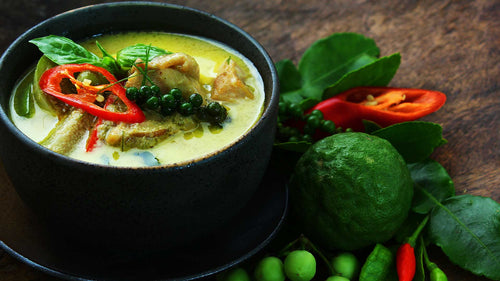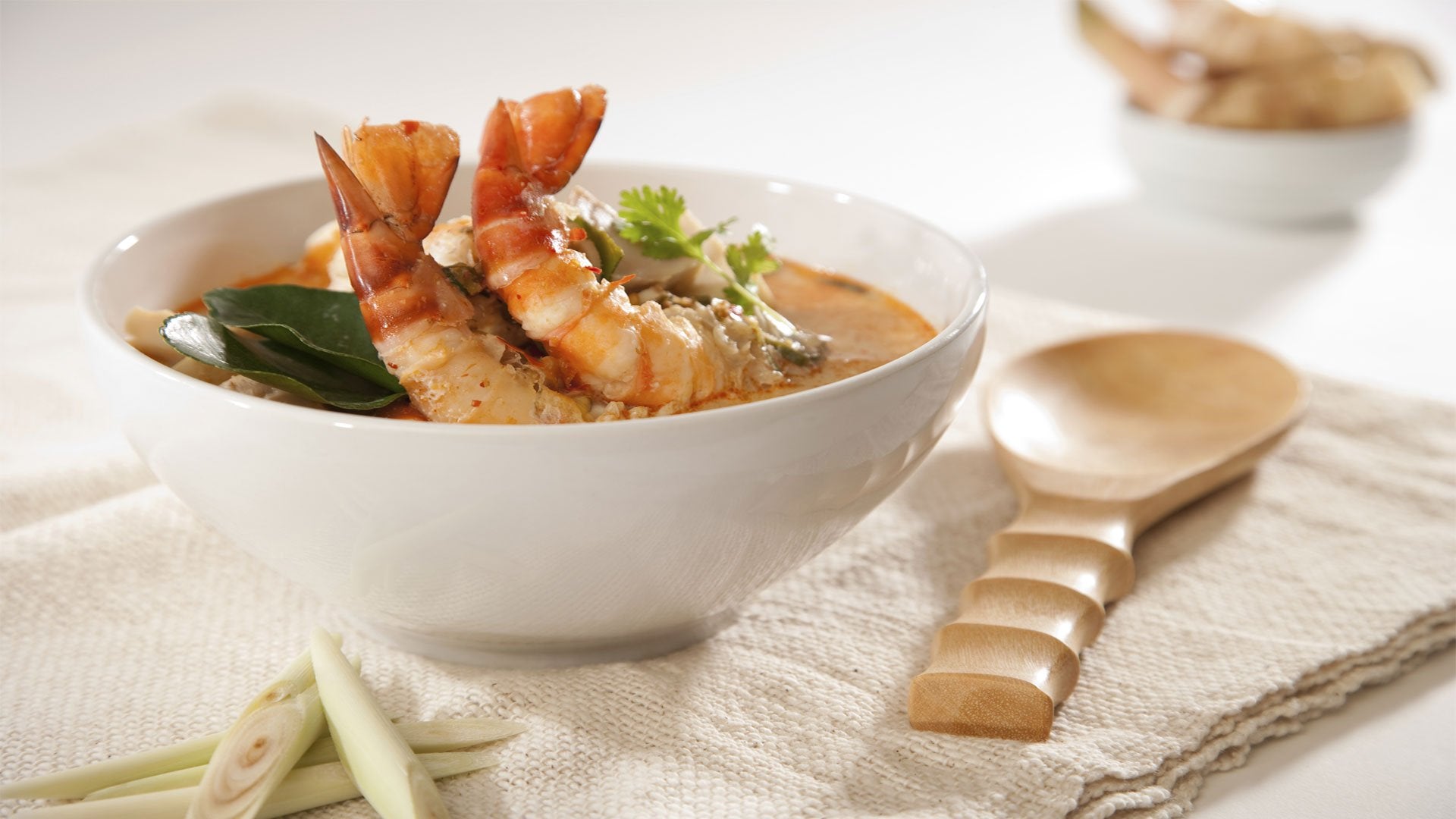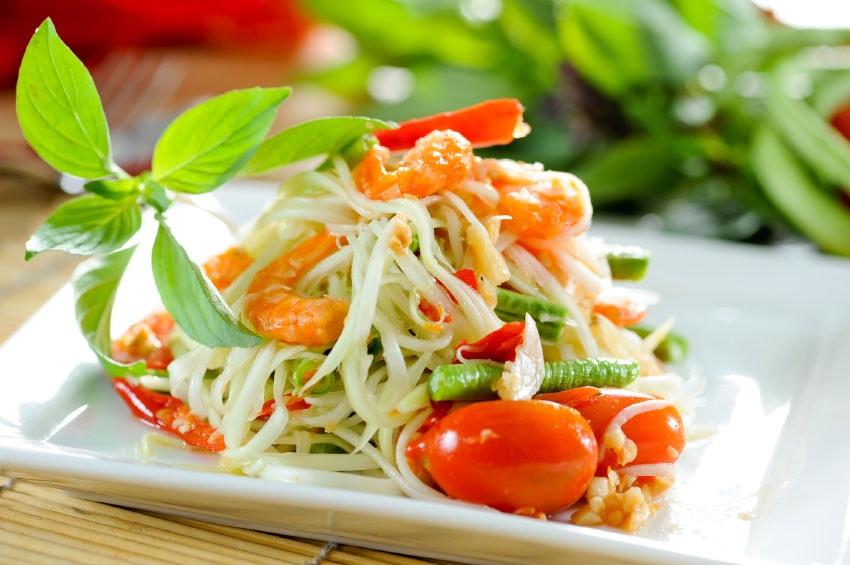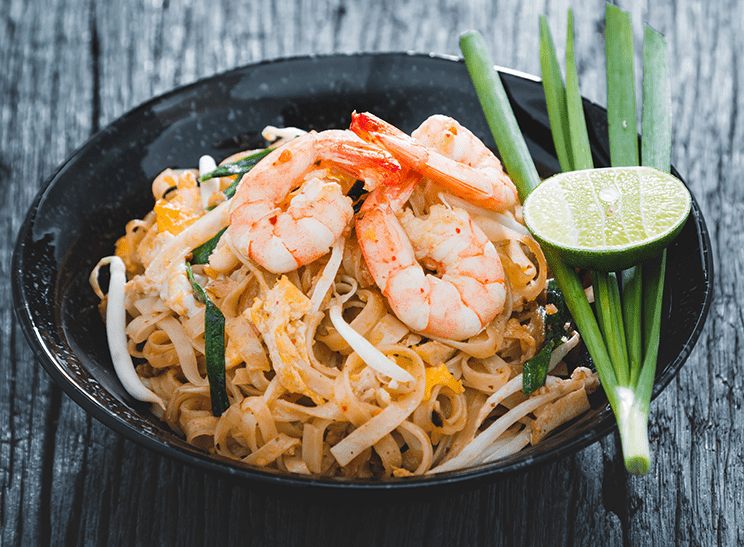Pancakes are one of those dishes that can be recognised almost everywhere in the world in some form or shape. In different countries and cultures, these tasty treats can be known for being flat and paper thin to thick, fluffy and chunky. While some regions favour sweet pancakes and others are more familiar with savoury, it’s needless to say that the sheer variety you can achieve in pancake recipes is what makes them such a popular food around the world.
This is just the same across Asia. Many countries in Asia have their own rendition of what we all know as a pancake and of course, each with their own unique quirks and perks. So if you’re into fluffy and puffy pancakes, enjoy fruit fillings or like to roll things up, you’re in luck! In this blog, we’re sharing 3 unique Asian pancake recipes (from Thailand, Japan and Indonesia/Malaysia) you need to try in anticipation of Pancake Day…
Thai Banana Pancakes (Roti Gulay)

In Thailand, pancakes are called Roti and like many other foods, are a common street food snack in the country (especially tourist hotspots like Bangkok). The most common type of Roti is Roti Gulay (Gulay meaning Banana), which forms the filling of this Thai pancake. However, other great tasting fillings include mangoes, strawberries, Nutella and chocolate sauce (these have become increasingly popular in the tourist spots of Thailand as well); you can even opt for savoury fillings like cheese and spring onions, just be sure to skip out on the sweet ingredients.
Anyone that has visited Thailand may be familiar with the theatrical and technical way in which street stall vendors carefully prepare these pancakes. If you haven’t been to Thailand to see this for yourself, a quick search on YouTube will give you a good idea. However, don’t be alarmed by how ‘difficult’ it appears to be to the untrained hand. You don’t need to do all of that throwing and flipping to the dough to achieve the perfectly thin pancake that’s ready to fry. Instead, you can simply stretch the dough out carefully, which takes a little more time but gets the same results. Besides, street food vendors in Thailand are typically serving multiple customers a day and it's in their best interest to find the most time efficient way to make their dough into thin pancakes (and also in their interest to make the process as entertaining as possible for tourists).
If you really love this recipe but don’t want to go through the hassle of making the dough each time you can save time by making the dough in bulk. Simply cook the portion you want to enjoy straight away and save the rest in the fridge to cook a couple of days later. We don’t recommend storing the dough in the fridge for any longer than two days, however, as the texture may be hard to work with.
Thai Roti pancakes aren’t only great as a snack, you can enjoy them for breakfast much like western pancakes or also as a dessert.
Thai Pancakes Recipe:
Ingredients:
Instructions:
- Begin by adding salt into a mixing bowl, followed by water and stir to dissolve the salt.
- Follow by adding the condensed milk (to add a sweet flavour to the dough), along with 1 egg and stir with a whisk until they both blend into the water.
- Next, sift the flour into a separate bowl and add the room temperature butter. Mix the butter into the flour using your hands/fingertips until the butter is well combined.
- Now create a hole in the middle of the flour mixture and add the liquid mixture prepared before. Then mix everything together by hand until there’s no longer any dry flour. After this, cover the bowl and allow the dough to sit for 30 minutes
- After 30 minutes, gently knead the dough for a few minutes to dry out the texture. The dough should not stick to your hands. If the dough is still sticking, sprinkle it with a small amount of flour until it no longer sticks. Then leave the dough to sit again for 15 minutes.
- Next, stretch the dough into a cylinder/baguette shape and cut into equal sized portions, (the size of the portions should fit into the size of the pan you will be using). Then spread oil into a large bowl to place each portion of dough and prevent them sticking together.
- Now, add oil to your hands and create dough balls by flattening each portion and folding the edges into the centre to create small ball-like shapes. Then brush each portion of dough with cooking oil to further prevent sticking. Leave the dough in the fridge for 3 hours.
- After 3 hours, take a dough ball and press it down to flatten then begin to carefully stretch the dough from the edges to create a thin pancake base. Once stretched, trim the thick edges of the pancake base (leftover dough batter can be used to make smaller pancakes).
- Now place cooking oil in a pan and place the roti pancake based on top to cook. The pancake base will shrink and fold slightly, carefully reopen and stretch it while the oil is not hot.
- Next, place roughly 9 banana slices into the centre of the pancake and fold the pancake base over the banana while it is still soft and moveable. Allow the pancake to fry on each side for 1 minute at a time, rotating until it has a crispy texture and golden colour.
- Finally place the roti pancake on a chopping board of serving plate and cut into bite sized pieces. Drizzle with your chosen toppings such as condensed milk and enjoy!
Japanese Soufflé Pancakes

Pancakes in Japan date back as early as the 16th century, where the original Japanese pancake was called ‘Funo-yaki’. This pancake combines flour, sake and water to make a flattened dough which is topped with savoury spreads such as miso. The savoury pancake is still present in Japan, however, today it is known as the Okonomiyaki pancake. This pancake uses a variety of ingredients mixed with cabbage and a wheat-based flour batter to make a deliciously filling pancake which comes in many flavours.
Fast forward to modern day Japan, however, and you will come across their latest innovation in pancakes, the Japanese soufflé pancake. Quite the contrary to traditional pancakes in relation to the celebration of shrine Tuesday, which are flat by nature, the Japanese have risen pancakes to new heights - quite literally.
What makes Japanese pancakes so different? Well, in Japan soufflé pancakes are made to be taller, fluffier and slightly less sweet than regular pancakes. Most of the ingredients are the same but they are used in slightly different ways. To achieve the soufflé-like appearance, Japanese pancakes separate the egg white from the yolks to create a whipped egg white meringue that is folded into a pancake batter, (along with the whisked egg yolks) and also uses less flour than typical pancakes. The aim is to make the lightest, fluffiest, cloud-like pancakes.
Fancy making your own Japanese souffle pancakes? Check out our recipe below:
Ingredients:
-
6 tbsp Cake Flour
- 2 1/2 tbsp skim milk
- 1 tsp baking powder
- 1/4 tsp vanilla extract
-
1/2 tbsp Kewpie mayonnaise (Japanese mayonnaise)
-
3 tbsp Coconut Sugar
- 2 large eggs egg whites (and egg yolks separated)
Instructions:
- Add the banana extract, vanilla extract, milk, egg yolks and kewpie mayonnaise into a medium bow and slowly sift in the cake flour. Mix the ingredients together with a whisk until the batter is pale and smooth.
- In a separate bowl, use an electric mixer to whisk the egg whites and sugar until they create a soft peaks for a meringue. This should take roughly 2 to 3 minutes.
- Next, gently fold the meringue batter into the first egg yolk and cake flour batter, ⅓ at a time. Make sure you are folding the batter right down to the bottom of the bowl, but don’t overmix as you don’t want to lose their air bubbles that make these pancakes light and fluffy. The final mixture should still be very light and without any visible streaks.
- Have a skillet on a medium to low heat and spray some cooking oil spray. You can either use a ring mould or freestyle. Place the pancake batter onto the skillet according to the size of pancake you desire. (Note that the pancakes will rise slightly). Then add a few teaspoons of water to the pan (make sure the water does not contact the pancakes). Close the skillet lid and allow to cook for 3 to 4 minutes.
- Once the pancakes are cooked on the top, you should be able to slightly shake the skillet without the batter spilling out. At this point the pancakes are ready to flip with a spatula and cook again on the other side for 2 to 3 minutes.
- The final result should be warm golden pancakes, with a toasted appearance! Add your preferred toppings and serve them as soon as possible to enjoy their appearance as these pancakes do deflate with time.
Indonesian Dadar Gulung Pancakes

Dadar Gulung is a type of pancake native to Indonesian cuisine. In fact, it’s more commonly known as ‘the Indonesian coconut pancake’, although it is also enjoyed across Malaysia, Singapore and even Sri Lanka! They’re widely popular and can be found being sold in market places and by food vendors in the streets of various South-East Asian countries
The name of this traditional treat can be translated to ‘pancake roll’ which perfectly describes how these pancakes with a crepe-like consistency are rolled up to eat with a soft coconut filling. Dadar Gulung pancakes also have a distinctly vibrant green colour which comes from the infusion of pandan leaves extract or essence paste. Pandan leaves give these pancakes a uniquely refreshing and earthy vanilla-like flavour which works brilliantly with the shredded coconut filling.
The great thing about these Dadar Gulung is how impressive they look in comparison to how simple they are to prepare. Between the lush green colour and the rolling, anyone would think these pancakes require a lot of effort or technical skills. When in reality, all they need is most of the ingredients typically used in western pancake recipes. Just get your staple flour and eggs; swap out the standard dairy milk for coconut milk, and the regular sugar for palm sugar, add the pandan essence paste and you’re on your way to making these Indonesian coconut pancakes. Check out our recipe for an easy Indonesian Dadar Gulung below:
Ingredients:
Instructions:
- Begin with preparing the filling by adding the shredded coconut, palm sugar, pandan leaves and water to a pan over a low heat. Stir and simmer until the sugar is dissolved into a syrup, the filling will be ready when all of the liquid has been absorbed. Remove the pandan leaf pieces and set aside to cool.
- Next add all the ingredients for the pancakes into a bowl and whisk until the batter is light, smooth and quite runny. Be sure there aren’t any lumps in the batter (use a sieve for the flour if necessary).
- Add a medium scoop of the pancake batter into a non-stick pan and cook over a low heat. Once cooked, remove and set aside to cool. Repeat this process until the pancake batter is finished.
- Now assemble the pancake rolls by taking the pancake crepes and adding a tablespoon of the coconut paste filling to the centre. Fold both sides of the pancake crepes into the centre and wrap up each roll from the bottom. Repeat this process with all of the pancake crepes.
- Finally, you can garnish the pancakes with pandan leaf pieces or icing sugar. Enjoy!












Leave a comment